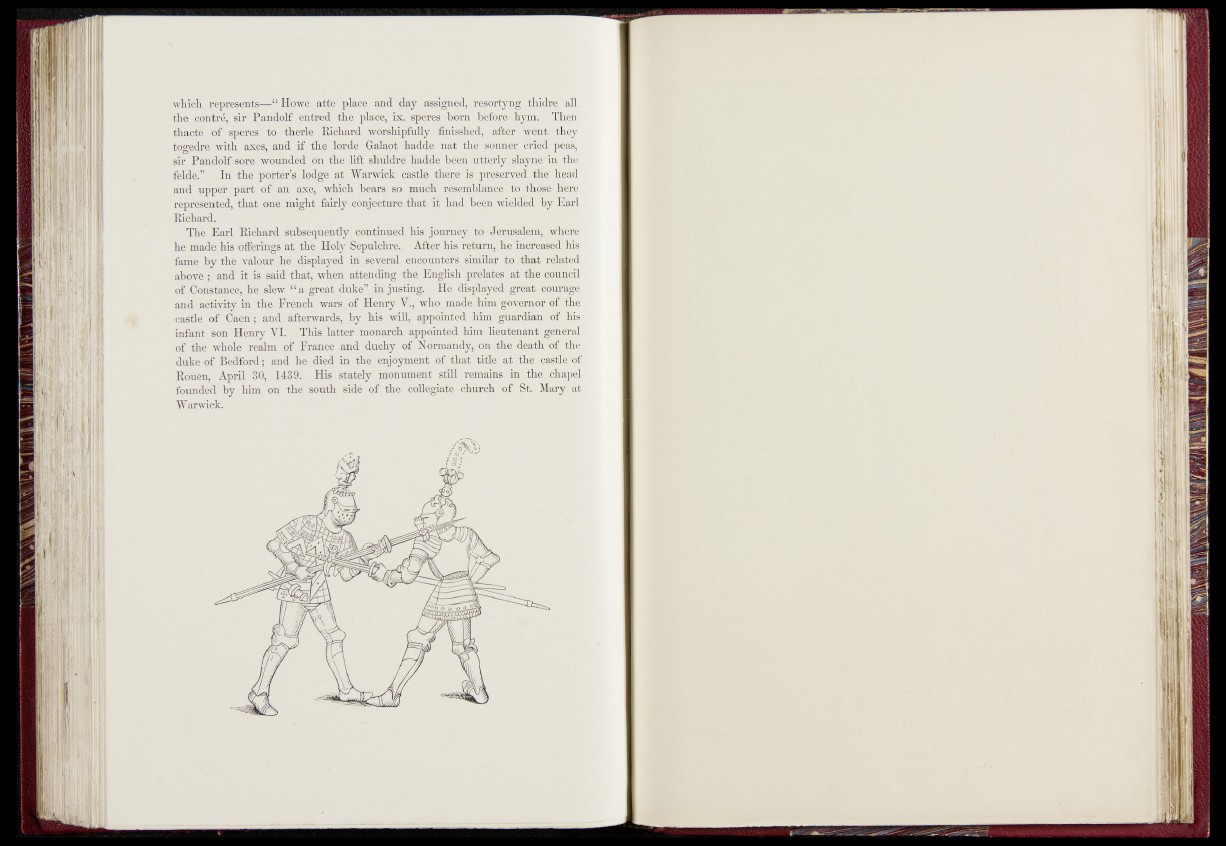
which represent^-“ Howe atte place and day assignedyiV^^^fegjhtdre all
the cohiiA, sir Pandolf entred the place, ix. speres fejfn hefo^J^^T]»’Trhen
thacte of speres to^fherlfe' Richard worshipfullyi^äiisshed^ after ’went they
togedre with"? 4xes, and if ’the lorde Galaöt- hadde^ nal^l|p Conner cried peas,
sir’Rjmdolf sore" wounded on-the lift shuldre hadde T^feh •,fitterly slayne’.in the
felde/i'clln the porter’s lodge at Warwick castle ^ther^i^preseryed the head
and iipp'er part of, art axe£ which hears so much resemblance to those here
represented, that om^might fairly conjecture that it Jbaff^ie^wielded Jay E arl,
Richard,
The Earl Richard subsequently continued his journey to Jerjnsaiein, . where
he made his offerings at the Holy Sepulchre, After his return, he increasedhis
fame by the valour he displayed in several encounters similar to'that related
abpVe ; and it is said that, when attending the'English prelates1 a t t^pouncil
of Gonstance, he slew 5*a great duke”, ip-justing. He displayed gteat/cqqfi&ge
and activityin the French wars of Henry V., who -made him governor of Mie
castle of Caen; and afterwards,-by. his will, appointed him guardianK®^is
infant son Henry VI. This latter monarch, appointed dato lieutenant, general
of the whole realm of France and duchy of ^feianffyj- on- the death of fffie
duke of Bedford; and he died in the enjoyment -of "tKat ’title^at the ;dastie‘of
Rpugnj April 30, 1A39. His stately'monument stiH-remains in the ||shpel
founded by Mm on the south side of the collegiate church at
Warwick.